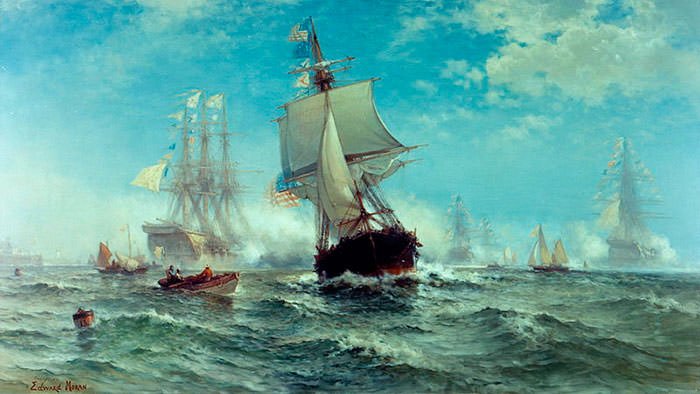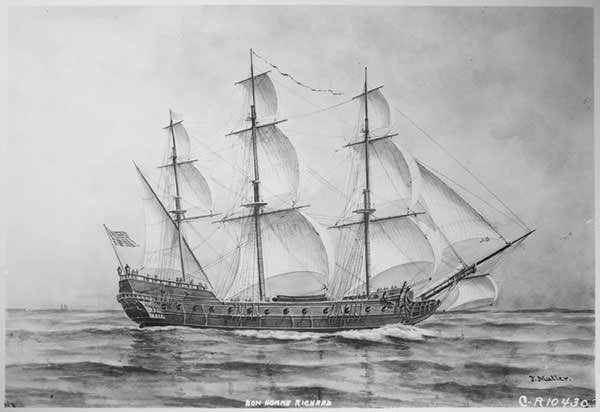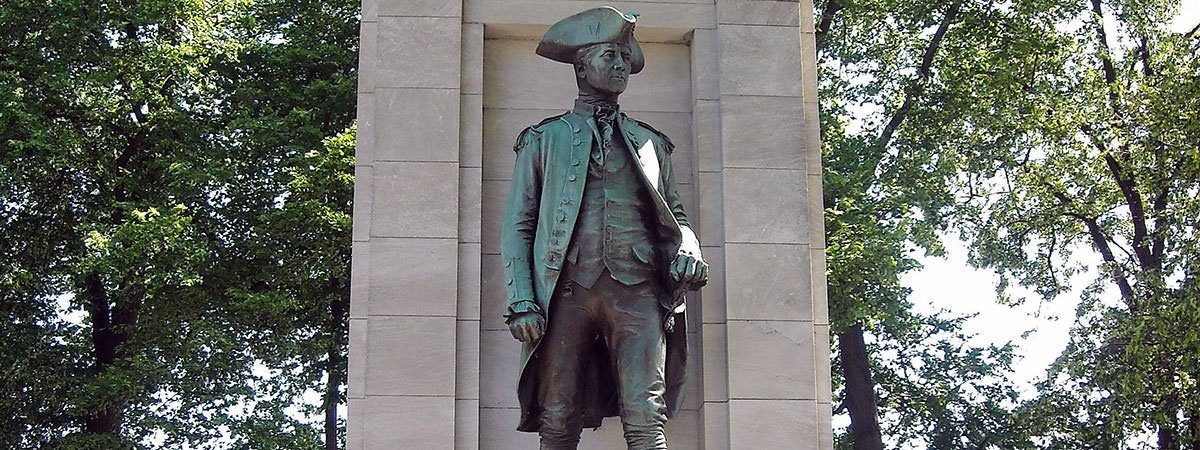John Paul Jones (July 6, 1747 – July 18, 1792) was a Scottish sailor who served in the Continental Navy during the American Revolutionary War. Jones began his career as a lieutenant of the frigate Alfred. After distinguishing himself as commander of Alfred, he was given command of the sloop Providence. As commander of Providence, he captured sixteen British ships during one six-week cruise which led to him being promoted to Captain. In August 1779, Jones took command of the 42-gun USS Bonhomme Richard and sailed around the British Isles. As commander of Bonhomme Richard, Jones defeated the better equipped British ships Serapis and Countess of Scarborough in one of the most famous naval battles in American history. For his contribution, Jones is often called the “Father of the American Navy”. Here is a summary of the role of John Paul Jones during the American Revolution.
Alfred
John Paul Jones was born John Paul on July 6, 1747, in a small cottage in Arbigland, Scotland. He went to sea as a youth and was a merchant ship-master by the age of 21. He served as commander of several British merchant ships. In 1773, however, John Paul was caught in a precarious situation as he murdered a mutinous sailor on the island of Tobago, which he claimed was in self-defense. Paul, believing that he wouldn’t get a fair trial, fled to North America and added the last name “Jones” to conceal his identity. When the American Revolutionary War began, Jones sided with the colonists and joined the newly founded Continental Navy, the precursor of the United States Navy. He was made a lieutenant of the frigate Alfred, the flagship of the fleet commanded by Commodore Esek Hopkins. It was aboard Alfred, on December 3, 1775, that John Paul Jones became the first to hoist the US flag over an American warship. As commander of Alfred, Jones distinguished himself in action in the Bahamas and against the British ship Glasgow.

Providence And Ranger
In 1776, Jones was given command of the sloop Providence. As commander of Providence, Jones performed several important duties including transport of troops, escort of convoys and movement of supplies. Moreover, he captured sixteen British ships during one six-week cruise. This led to him being given permanent promotion to captain. On June 14, 1777, Jones was given charge of the newly constructed USS Ranger. He then set sail to France on Ranger. It was in France that his vessel was saluted by the French Admiral La Motte Piquet. This made it the first American vessel ever to be recognized by a foreign power. Jones wrote of the event: “I accepted his offer all the more for after all it was a recognition of our independence and in the nation”. In six months spent primarily in British waters, the Jones led USS Ranger captured five prizes and staged a single failed attack on the English mainland at Whitehaven.

Bonhomme Richard
In August 1779, Jones took command of the 42-gun USS Bonhomme Richard and sailed around the British Isles. In September, he intercepted British ships Serapis and Countess of Scarborough. What followed was one of the most famous naval engagements in American history. After inflicting considerable damage to Bonhomme Richard, Richard Pearson, the captain of Serapis, asked Jones whether he was willing to surrender. To this Jones famously replied: “I have not yet begun to fight!” After a duel which lasted three and a half hours, Jones forced a surrender of Serapis and Countess of Scarborough. The battered Bonhomme Richard sank the following day and the Americans transferred to Serapis. Jones then sailed both the Serapis and Countess of Scarborough to neutral Netherlands.

Father of the American Navy
John Paul Jones helped establish the traditions of courage and professionalism in the United States Navy. He was the first well known naval commander of the United States and he is often called the “Father of the American Navy”. Jones was also a hero in France and Louis XVI, the King of France, honored him with the title “Chevalier”. In 1787, the Continental Congress awarded Chevalier John Paul Jones the Congressional Gold Medal, the highest civilian honor in the United States. After the Revolutionary War, Jones joined the Imperial Russian Navy but his tenure there was unremarkable. He then moved to Paris where he died in 1792.

